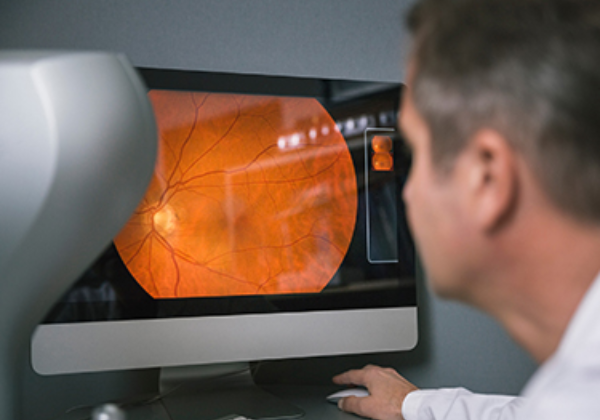Do You See What We See?
Vision Care as a Diagnostic Service
“Just because you can see clearly, doesn’t mean your eyes are healthy.”
- Dr. Arian Fartash1

While vision coverage is an important benefit for CHIP, Medicaid, and Medicare Advantage plans, vision exams do so much more than simply assess the need for corrective lenses.
VSP® Vision Care is a leading vision insurance company offering affordable access to network providers who use eye exams as a non-invasive diagnostic tool for their patients. Because a thorough eye exam provides eye doctors with an unobstructed view of blood vessels in the eye, providers have a unique insight into a patient’s overall health, in addition to their eye health.
This makes eye exams a powerful, non-invasive, and cost-effective way to help prevent complications resulting from acute, systemic, or chronic disease. Early prevention and detection of disease complications can help save money while improving both health plan and physician quality scores.
According to VSP Chief Medical Officer, Dr. Valerie Sheety-Pilon, “When eye doctors perform an exam, we’re testing your near and distance vision, how well your eyes move together, and your peripheral vision. We also check your eye pressure, the surface of your eyes, and your eyes’ internal structure. Damage to the retinal blood vessels can signal harmful conditions affecting the brain, heart, and more."2
A VSP network eye doctor can be one of the first healthcare providers to observe symptoms of diabetes and high blood pressure. Eye doctors can also make life-saving discoveries when their patients exhibit visual symptoms before other indicators of disease emerge.
For example, brain tumors can often lead to pressure on the optic nerve which impacts vision. A common visual symptom of multiple sclerosis is optic neuritis which can include pain when the eye moves, blurred vision, and loss of color vision.
In fact, signs of more than 270 diseases or health conditions can be detected through a comprehensive eye exam, including chronic diseases health plans are typically most concerned with, such as:
- Diabetes
- Asthma
- Congestive heart failure
- COPD
- Coronary artery disease
- Hypertension3
When a VSP network eye doctor detects the possible presence of acute, systemic, or chronic disease in a patient, they may refer the patient to their primary care provider or a specialist for further diagnostic evaluation.
The coordination among a patient’s medical team may be paralleled by collaboration between VSP and the patient’s health plan. When a VSP network eye doctor detects the presence of potential systemic issues−like diabetes, hypertension, and high cholesterol−this is recorded in VSP's data system and securely shared with health plan clients so their clinical staff can follow up to confirm the diagnosis and initiate relevant treatment, education, and support programs.
Care coordination between VSP and our client health plans adds an extra layer of support for the patient, which helps ensure the patient’s vision and overall good health are maintained, while helping the health plan save money.
Quality care that goes beyond regular eye exams is one of the reasons 85 million people entrust their vision care to VSP.
Contact us to schedule a free consultation with VSP
1 VSP. “The Deeper Meaning of an Eye Exam: Protection and Prevention.”
2 VSP. 2023. Clear Vision: A Key to Fall Prevention in Seniors
3 American Optometric Association. December 2014. Systemic Conditions with Ocular and Visual Manifestations